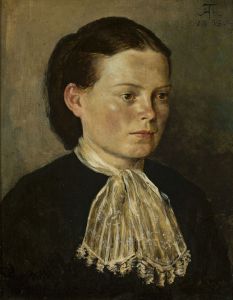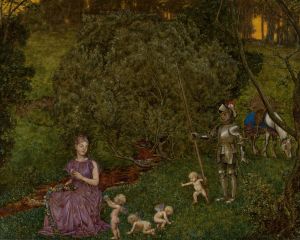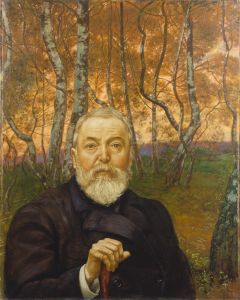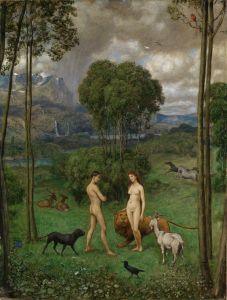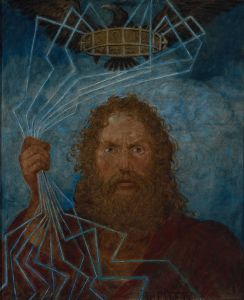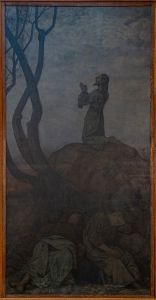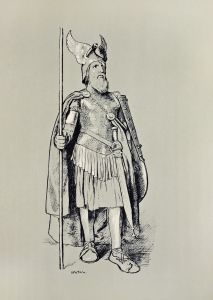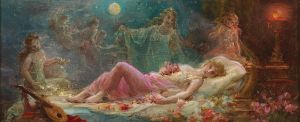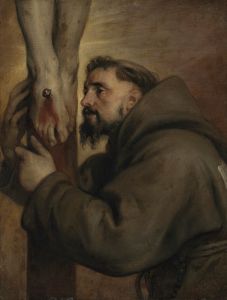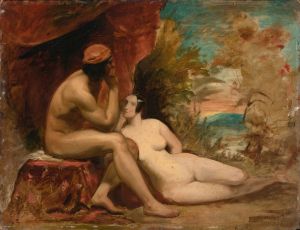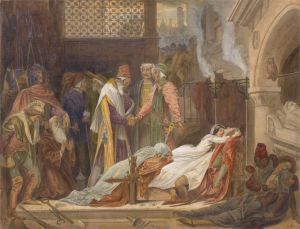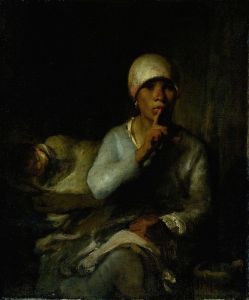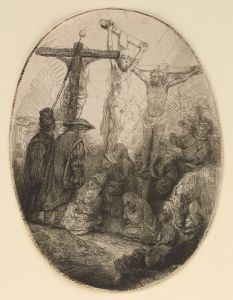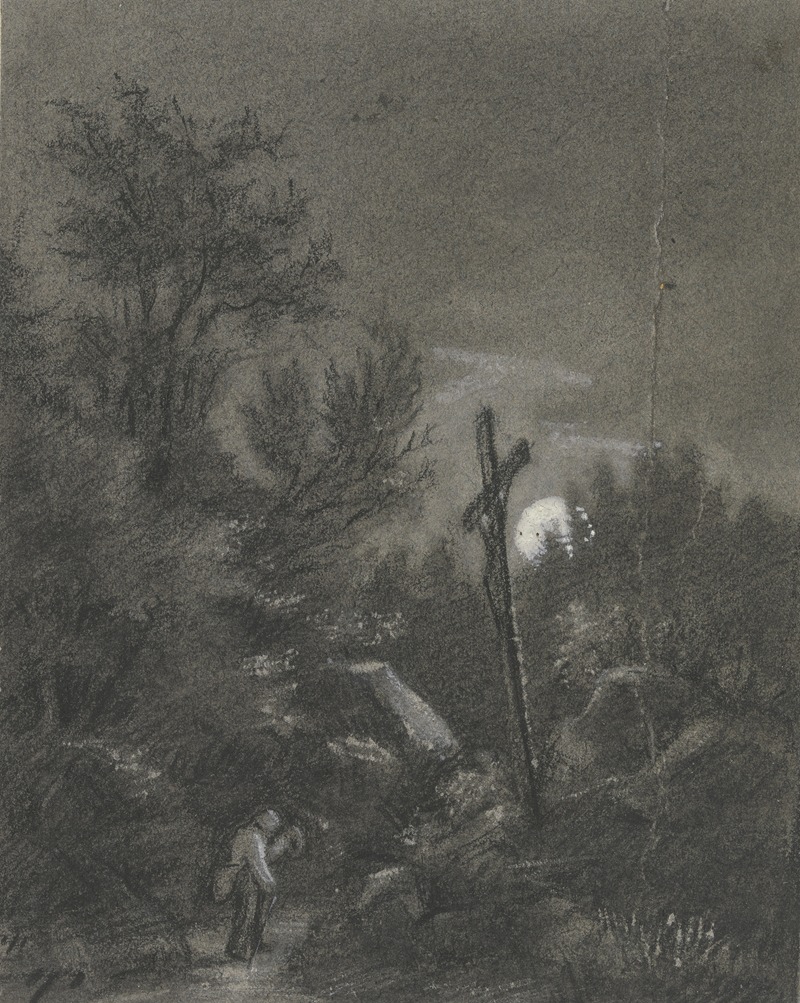
Cross in the moonlight
A hand-painted replica of Hans Thoma’s masterpiece Cross in the moonlight, meticulously crafted by professional artists to capture the true essence of the original. Each piece is created with museum-quality canvas and rare mineral pigments, carefully painted by experienced artists with delicate brushstrokes and rich, layered colors to perfectly recreate the texture of the original artwork. Unlike machine-printed reproductions, this hand-painted version brings the painting to life, infused with the artist’s emotions and skill in every stroke. Whether for personal collection or home decoration, it instantly elevates the artistic atmosphere of any space.
"Cross in the Moonlight" is a painting by the German artist Hans Thoma. Thoma was born on October 2, 1839, in Bernau in the Black Forest, and he became one of the most significant figures in German art during the late 19th and early 20th centuries. He is known for his landscapes, portraits, and mythological scenes, often imbued with a sense of romanticism and symbolism.
"Cross in the Moonlight" is one of Thoma's notable works, though specific details about the painting's creation date and its current location are not widely documented. The painting depicts a serene and contemplative scene, featuring a cross illuminated by the soft glow of moonlight. This imagery reflects Thoma's interest in combining natural elements with spiritual and symbolic themes, a characteristic feature of his oeuvre.
Thoma's work often drew inspiration from his surroundings in the Black Forest, and "Cross in the Moonlight" is no exception. The painting captures the tranquil and mystical atmosphere of the forest at night, with the moonlight casting a gentle light on the cross, creating a sense of peace and reverence. The use of light and shadow in the painting demonstrates Thoma's skill in rendering the natural world with a poetic touch.
Hans Thoma's career was marked by his association with various art movements and his influence on German art. He studied at the Karlsruhe Academy of Fine Arts and later spent time in Düsseldorf, Paris, and Munich, where he was exposed to different artistic styles and techniques. Thoma was also associated with the Munich Secession, a group of artists who sought to break away from traditional academic art and explore new forms of expression.
Throughout his career, Thoma received numerous accolades and held several prestigious positions. In 1899, he was appointed director of the Karlsruhe Academy of Fine Arts, and in 1901, he became a member of the Berlin Academy of Arts. His contributions to art were recognized with various honors, including the Order of Merit of the Bavarian Crown.
"Cross in the Moonlight" exemplifies Thoma's ability to blend natural beauty with spiritual symbolism, creating works that resonate with viewers on multiple levels. While specific details about the painting's provenance and exhibition history may be limited, its significance within Thoma's body of work is evident.
Hans Thoma passed away on November 7, 1924, in Karlsruhe, but his legacy lives on through his art. His works continue to be appreciated for their technical skill, emotional depth, and the unique way they capture the essence of the natural and spiritual worlds. "Cross in the Moonlight" remains a testament to Thoma's artistic vision and his ability to convey profound themes through the medium of painting.





